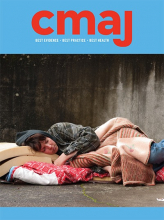In 2017, 22.9% of new HIV diagnoses in Canada were in people aged 50 years and older1
Similar rates of new diagnoses were reported in the United States in 2017 (17.1%) and in Europe in 2015 (17.3%).2 Screening for HIV is disproportionately low in adults 50 years and older, with a screening rate of only 25% in the US in 2009.3 This is likely because older adults perceive that they are at low or no risk for HIV exposure.3 According to the Public Health Agency of Canada’s HIV Screening and Testing Guide (https://www.canada.ca/en/public-health/services/hiv-aids/hiv-screening-testing-guide.html#c1), individuals who are/have been sexually active and have never been tested for HIV should be tested at least once.
Older adults report different sexual behaviours leading to differential HIV risk than younger individuals
Older adults in the largest risk category for HIV are those who have heterosexual sex (42%–48%), whereas younger adults in the largest risk category are men who have sex with men (38%–45%).2,4
The reason for HIV testing often differs by age
One study reported 70% of new diagnoses in people aged 50 years and older occurred in hospital compared with 42% in people aged 18–49 years.4 Another study reported that in more than half of people aged 50 and older screening was performed solely on the recommendation of a health care provider.3
At diagnosis, the CD4 T-cell count is lower in older than in younger adults (median 0.097–0.24 v. 0.307–0.394 × 109/L [97–240 v. 307–394 cells/μL])2,4
In one study, 70% of individuals aged 50 or older at diagnosis had concurrent AIDS.4 In the same study, older age was associated with a threefold increase in odds of late HIV diagnosis, defined as CD4 T-cell count < 0.2 × 109/L (< 200 cells/μL) or AIDS-defining illness.4
Older adults are more likely to adhere to HIV treatment than younger adults once antiretroviral therapy is initiated5
More frequent HIV screening will enable earlier diagnosis and, consequently, earlier initiation of treatment. As the HIV population ages, providers should also screen for and manage age-related comorbidities.
Footnotes
Competing interests: In last 3 years M. John Gill has served or been asked to serve as an ad hoc member of the national HIV advisory boards of Merck, Gilead and ViiV. No other competing interests were declared.
This article has been peer reviewed.











